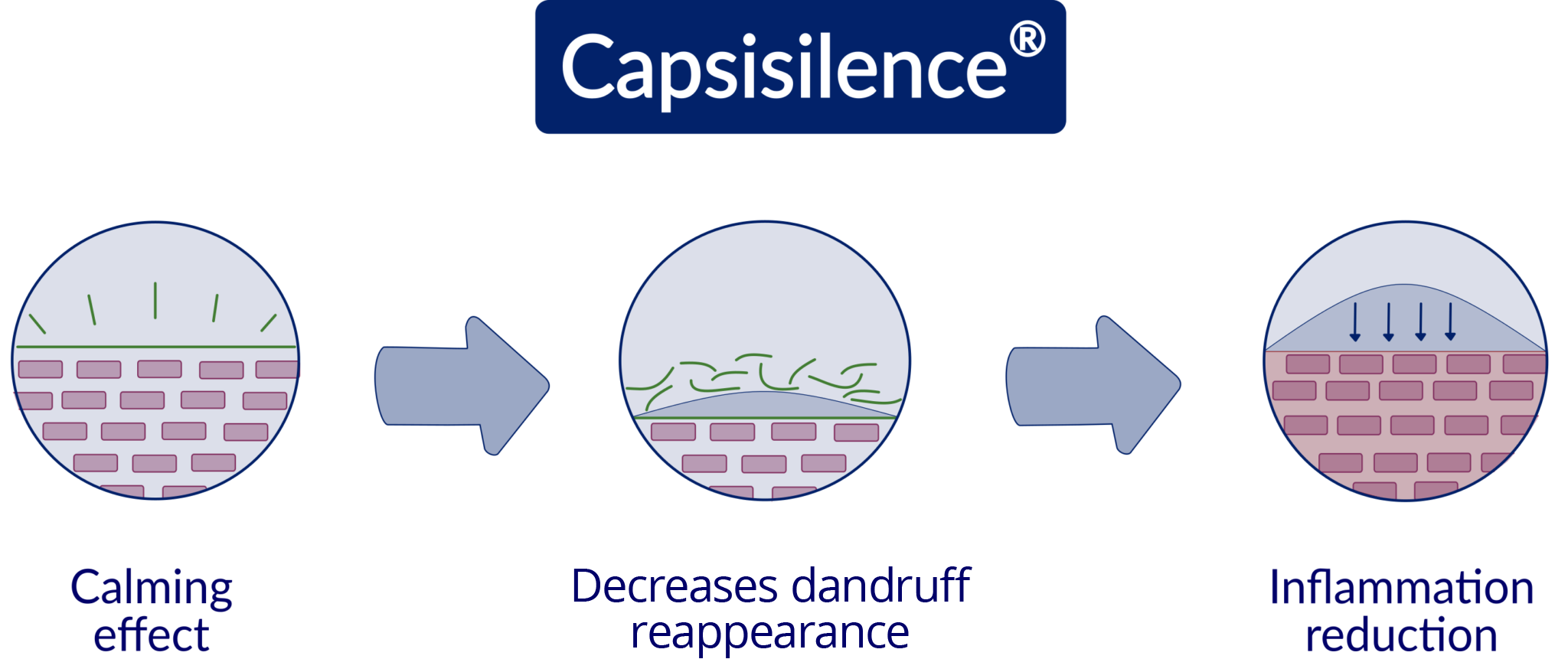Capsisilence®
CAPSISILENCE®: A novel active ingredient to relief scalp sensitivity for a health scalp
Scalp is one of the most sensitive regions of the body, according to a survey made among consumers with sensitive skin. Sensitive scalp manifests as itch, redness, irritation, oily skin and dandruff that can be triggered by cold, stress or the use of harsh shampoos. These stimuli produce sensory reactions like itching, prickling, tightness, pain and burning.
In addition to environmental factors, itchy scalp can be induced by skin lesions such as scalp psoriasis, atopic dermatitis and seborrheic dermatitis. Altered barrier function is also determinant in these sensitive skin conditions, as result of the inflammatory environment and sensory neuron reactivity in the skin.
On the other hand, oily scalp and dandruff are produced by an excessive sebum secretion by the hair follicle. This oily environment favors the colonization of Malassezia yeast invading stratum corneum, causing inflammation and, therefore, the disruption of the barrier function. Many of the strategies to deal with sensitive scalp are focused on anti-fungal ingredients that reduce Malassezia colonization, in combination with corticosteroids that decrease inflammation and dandruff production. However, these ingredients present important side effects and fail to tackle itch and pain, the most recurrent sensory components of sensitive scalp.
Here we present an innovative molecule, Capsisilence®, that antagonizes neuronal receptor activity in a dose-dependent manner. Capsisilence®, suppresses sensory neuron activation and consequently neuropeptide release, inflammation, and pruritogenic signaling.
Our innovative active ingredient is designed to tackle the most significant manifestations of sensitive scalp.
Capsisilence® reduces the hyper-activation of sensory neurons, decreasing itchy scalp. Our ingredient is able to decrease inflammation thanks to its ability to block mastocytes degranulation. In addition, Capsisilence® ameliorates barrier function by increasing the gene expression of key molecules for the structural integrity of skin barrier.






